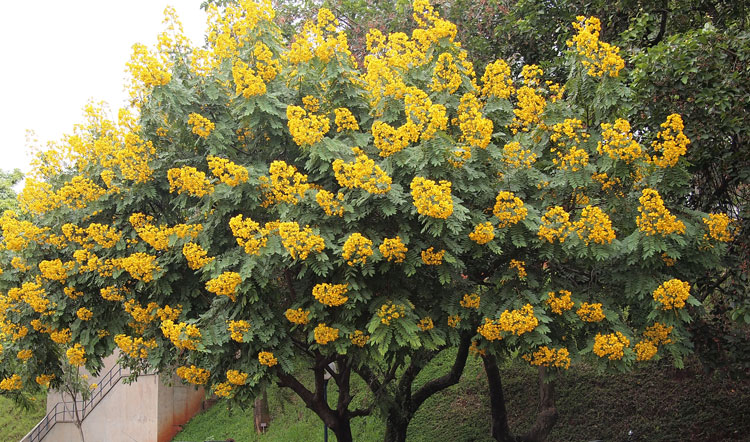Growers Guide for Cassia Shrub
Mostly evergreen shrubs, chiefly from tropical America, belonging to the Pea family, Leguminosae. They grow from 6-50 ft. in height, have pinnate, dark green, glossy leaves, and bear golden-yellow flowers in terminal clusters in summer. Cassia is from the original Greek name Kasia.
Most Cassias are hardy outdoors in the far South only. There they grow freely in light, well-drained soil in full sun. Some kinds, especially Cassia corymbose, a South American kind, are suitable for growing in cool, sunny greenhouses. Others useful for this purpose are Cassia glauca, a native of tropical Asia and Cassia splendida from Brazil.
Greenhouse Treatment
Under greenhouse cultivation, a minimum winter temperature of 50 degrees is required. The best compost consists of equal parts of peat and loam with sand added. In February, the lateral or side shoots on the main branches are cut back to within three buds of the base of the past summer’s growth, and the leading shoots—those at the ends of the main branches—are shortened by half. They are syringed frequently until the shoots break into growth, and are then repotted in larger pots. When established, cooler conditions are maintained and they are exposed to full sunlight to ripen the growth for flower production in summer.
When to Take Cuttings
Propagation is by shoots inserted in pots of sandy peat in March. They are placed in a propagating case in a heated greenhouse and when rooted are potted in 3-in. pots, being transferred later on to 5-in. pots in which they produce flowers the following summer. To ensure bushy, well-branched plants the main shoots are pruned back to three or four buds and the side shoots are treated similarly. The plants need abundance of water during the summer when growth is vigorous, but little from October to March when the plants are resting, although the soil must not be allowed to remain dry for any length of time.
A Hardy Kind
Cassia marilandica is a hardy plant of eastern North America. It grows about 3 ft. high and has semi-woody shoots that die back to their bases in autumn. It has pinnate leaves and bears terminal bunches of yellow flowers in late summer. The plants should, in cold localities, be set in light, well-drained soil in April; the roots should be protected with a layer of leaves or similar covering in winter. Propagation is by division of the plant in spring as soon as growth commences. Seeds of Cassia may be sown in March in pots of light soil in a greenhouse, temperature 55-65 degrees.
Economic Uses
The senna of commerce is perhaps the most important product of the Cassias. It is a drug with laxative and cathartic properties, obtained from the leaves and pods of several kinds. Thus Alexandrian Senna is the product of Cassia acutifolia, a shrub found wild in Nubia and the Sudan; Arabian or Tinnevelly Senna is obtained from Cassia angustifolia, a plant common in Arabia, southern India and other countries; and American Senna leaves are produced by Cassia marilandica, a United States shrub. Pods and leaves are packed separately in bales and large quantities enter our drug markets.






